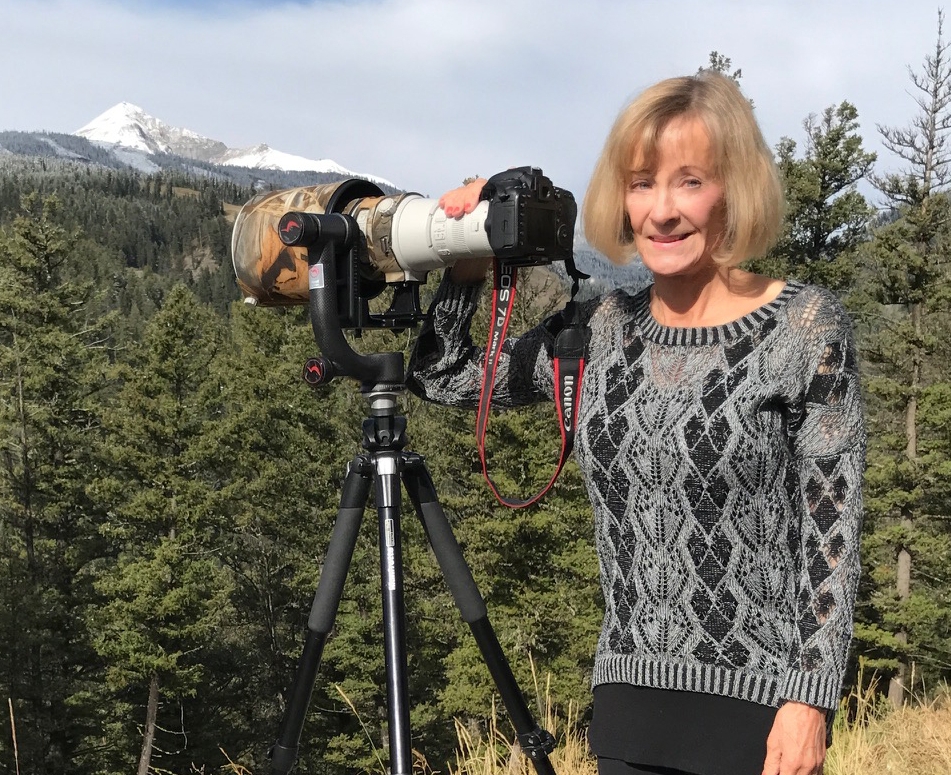Bear Necessities
Patricia Bauchman
Amateur photographer from Big Sky, Montana
I came across Patricia Bauchman’s photos while scrolling through the wildlife tag on Flickr. Most of the pictures in the tag were labeled with just the species name of the animal shown, but hers stood out because her captions were so entertaining. “Nom nom nom” on a bear with a mouthful of greens, and “Where did I park that nest?” on an egret with his neck stretched to full height. When I reached out to Patricia, she was as cheerful and humorous as her Flickr profile suggested, but also seriously concerned about the wildlife in her area.
Patricia was always interested in photography, but didn’t really focus on wildlife until she moved to Montana after retiring. Before, she lived in North Carolina where she would photograph family events and vacations. But when she and her husband relocated to Big Sky (an hour’s drive away from Yellowstone National Park), she was constantly surrounded by nature. It would be difficult not to become interested in the local wildlife. She invested in camera lenses, the biggest of which she lovingly refers to as “the bazooka,” and now spends a huge amount of her time out and about taking pictures.
“It’s really become a big part of my life,” Patricia tells me. “Not only photographing, but getting to understand their habitats and actions and whatnot.” She’s certainly picked up a lot of knowledge about animals while taking pictures, or more often, afterwards. She says, “I would shoot anything that would move… I might not even know what it was, and then I would look in my field guide, and that way be able to learn more about the particular animal or bird I had just shot… So to me it’s like a word-a-day. Or I guess more like a bird-a-day!”
Patricia has had some pretty incredible encounters with wildlife while out with her camera. One of these was with a lone wolf in the Lamar Valley in Yellowstone. Patricia was there in the early spring, the off season, so there wasn’t anyone else around when the wolf crossed the road in front of her car. Then: “He actually turned around and stopped and stared at me, which was heart-stopping. At the time they reintroduced the wolves, I didn’t know that much about it. But because of that encounter with that wolf, I became more interested in and truly a supporter of what they’ve done to reintroduce the wolf.” She laughs as she adds, “My brother-in-law, who’s a cattle rancher, doesn’t agree with me.” Now she regularly seeks out who she calls “the Wolf People,” who are usually out with their scopes in the Lamar Valley, know all the individual wolves and packs in the park, and even created an online genealogy for them.
Patricia’s photography has also made her more aware of some of the issues that animals are facing. She tells me about how invasive pine beetles are decimating the whitebark pine trees of the west, which are an important food source for many animals, including bears. Drought conditions, which have worsened recently thanks to climate change, are ideal for these beetles. And as temperatures rise, they can access higher places. Another major problem is the disappearance of animals’ migration routes due to human development. Patricia mentions the construction of the luxury resort of Jackson Hole, south of Grand Teton National Park, and how people settling there in the late 1800’s blocked elk migration routes, and a controversial elk reserve was set up to make up for it. She supports some conservation organizations that are trying to convince people to open up their land for migrating species.
But the main issue that is closest to Patricia’s heart is when people get too close to wild animals, feeding them or harassing them. She tells me about a memorable animal encounter she had while photographing hummingbirds at home. “A little black bear popped up beyond my wildflowers in the back, and I got a great shot of him (right). But then I noticed he wasn’t very afraid of me, and he seemed too comfortable with people.” As it turned out, some men who were working on a construction project had been feeding the bear; they thought it was cute.
Feeding wild animals may seem harmless and fun, but it seriously threatens the animal’s life – and in the case of bears and other predators, humans too. Human food is not healthy for wild animals, and feeding them makes them think that we are a good food source. Smaller animals are at risk from things like cars, and larger, more dangerous animals like bears can become aggressive, and sometimes have to be killed to ensure human safety. Even getting up close without offering food is dangerous, and stressful for the animal. Patricia tells me about a moose cow (above) she’s frequently seen at her cabin in Idaho: when people found out that the moose had twin babies, they mobbed the scene and forced the family to retreat onto an island to escape the crowds.
Despite all this, Patricia maintains her joy for nature and her sense of humor. In fact, one of her photos (right) was recently a finalist in a comedy wildlife photography contest. After our conversation, I looked up the competition and realized that I had seen these pictures before; they went viral online not too long ago. When Patricia found they had gone viral, she fully realized how powerful the internet can be for spreading information and images. She’s put this to good use on her Flickr page. Her knack for entertaining captions combined with more than a thousand followers – not to mention the gorgeous photos – is perfect for reaching people and affecting them, and hopefully inspiring them to protect biodiversity too.
Quick Facts
Favorite places to take photos: Her own backyard, Yellowstone National Park, Glacier National Park, and around her cabin in Idaho.
Favorite photo subjects: Bears! And bison: “They seem like big luggy thing that aren’t entertaining, but they are! They’re fun to photograph.” Also wolves, foxes, pine martens, moose, and birds.
What’s next for Patricia: Educating people about how to keep bears safe (i.e. not feeding them), photographing more wolves, and maybe traveling to places like South Africa, Australia, and New Zealand. “But in the meantime, I’m also very content and happy with what’s around me. It’s hard not to be, living this close to Yellowstone!”
Where you can find her online: Her Flickr profile
Patricia’s Photography Tips
- Join workshops and field seminars from conservation photography organizations. They’ll get you to the animals in a safe and responsible way, and help you take better photos. Yellowstone Forever is a great one if you’re in the Yellowstone area.
- Keep an eye out for “animal jams” – where people have stopped their cars to watch wildlife. If you’re in Yellowstone and there’s a wolf, you’ll know because the people looking will probably have scopes rather than cameras.
- NEVER FEED OR HARASS WILD ANIMALS.







